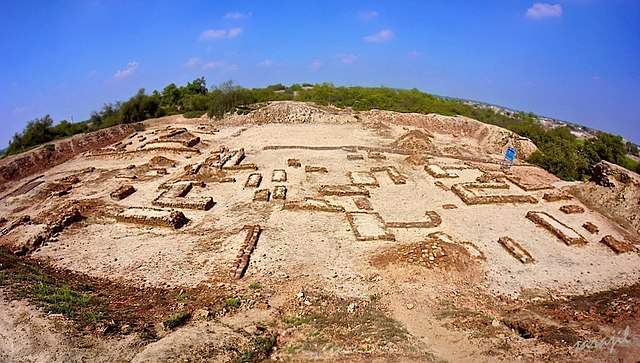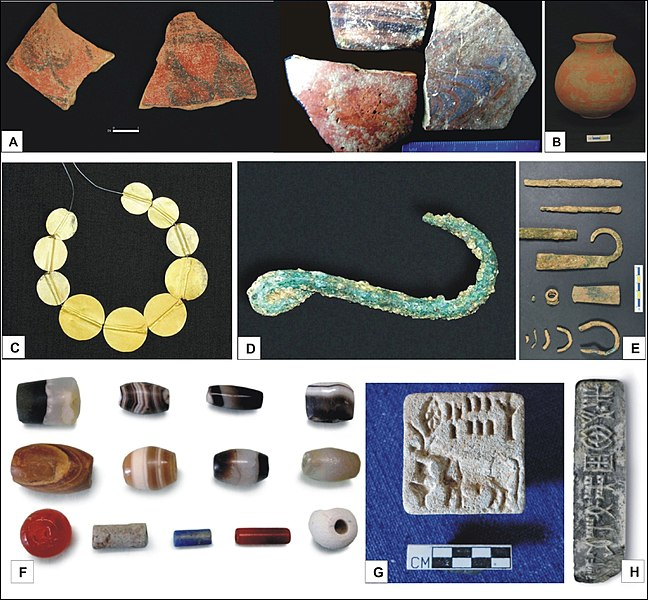The mysteries of the Indus Valley Civilization
The cities of Indus Valley Civilization, spread over at least one million square kilometers in Pakistan, Afghanistan and India, were so well-planned two and a half thousand years ago that it is impossible to imagine them in today's cities.

The biggest mystery about the Indus Valley Civilization is that its script has not been read successfully to date. But experts agree that even when the pyramids did not exist in Egypt, the Indus Valley Civilization was not only at its peak, but there was no religious interference and a liberal society.
When this civilization was at its peak thousands of years ago, it was even larger than the combined volume of both the Egyptian and Mesopotamian civilizations of the time. Its vast cities were located on the banks of rivers that still flow through Pakistan and India.
Renowned British archaeologist Charles Mason discovered it in the late 1820s when he went to Harappa and inspected the bricks and fragments found on the mounds here. Thirty years later, in 1856, when the railway line passed through here, these stones were used for railway tracks.
In 1920, archaeologists carried out regular excavations at Harappa and Mohenjo-Daro, revealing the ancient civilization of the Indus Valley. According to experts from the Indian Institute of Kharagpur and the Archaeological Survey of India, they have recently found evidence that the civilization is 8,000 years old, up from 5,500 years ago. An article published in Nature Magazine on May 25, 2016, also considered it to be older than both Egyptian and Mesopotamian civilizations.
Mohenjo-Daro, the largest city of this civilization, has been found to have the remains of a large swimming pool, which was built of solid brick, and was surrounded by changing rooms, which gives an idea of how these people loved cleanliness.

The inscriptions on the books, photographs and coins found in Mohenjo-Daro contain images and symbols that have not been read to date. This ancient script is still a mystery to experts today. When Harappa, Mohenjo-Daro and Rakhi Garhi were excavated, experts found huge warehouses of grain made of bricks and wood. All these warehouses were built on the banks of the river to facilitate the delivery of goods. There were also grinding mills near the Harappan warehouse. This means that these goods were shipped to other areas by river and sea.
Lothal in the Indian state of Gujarat is also one of the oldest cities in the Indus Valley. A 37-meter-long dock is considered to be the oldest ever discovered here. From here, trade took place between Harappa and the Indian city of Gujarat via the Subarmati River. Because in those days the desert was part of the Arabian Sea.
Experts have also found evidence here that suggests that people of Sindh civilization were interested in toys and sports. There are square boxes on the rocks, which is probably the earliest form of chess. However, a six-sided stone similar to a ludo grain has also been found here which may have been used in a similar game.
In Mohenjo-Daro, lined houses and bathrooms, straight streets, street bins and drains covered with drainage and at least 700 water wells are enough to understand that the Indus Valley People settled the cities with regular planning.

Home items included necklaces, jewelry and utensils. There were both rich and poor in the city, but surprisingly there were no places of worship and no traces of a ruler's palace. Very few weapons have been found here which proves that the people here were peaceful and convinced of coexistence.
Seals have been found in and around Harappa to help us understand that there was a regular system of trade based on barter instead of money, and that these trade links extended to areas as far as Mesopotamia. The necklaces, utensils and weapons found in the city of Ur in Mesopotamia are similar to those found in Harappa.
Thousands of engraved seals with images of Mahadev Pashupati have been found in Harappa, the earliest evidence of Shiva and Vedic. Another surprising thing is that the people of Harappa were priests of goddesses instead of gods. A large number of idols have been found here.
There are also 57 cemeteries in Harappa with square graves in which their belongings have been buried at the same time. A total of 44 human skeletons have been recovered from Mohenjo-daro, including a mother, father and their child holding each other's hands. Experts make different assumptions about how these people died.
How did life end so suddenly in Harappa and Mohenjo-daro? In this regard, experts have not yet reached any evidence of war, fire or flood, but it seems that the diversion of Sindh, Ghaghra and Hakra rivers destroyed the economy of these cities and gradually life here became extinct./div>
Thank you for reading! Stay Safe!👋😌
Resources:
0
0
0.000
This post has been rewarded with an upvote from city trail as part of Neoxian City Curation program
 . We are glad to see you using #neoxian tag in your posts. If you still not in our discord, you can join our Discord Server for more goodies and giveaways.
. We are glad to see you using #neoxian tag in your posts. If you still not in our discord, you can join our Discord Server for more goodies and giveaways.
Do you know that you can earn NEOXAG tokens as passive income by delegating to @neoxiancityvb. Here are some handy links for delegations: 100HP, 250HP, 500HP, 1000HP. Read more about the bot in this post. Note: The liquid neoxag reward of this comment will be burned and stake will be used for curation.
Well written. This is a must-read for history enthusiasts and students. Please also include the education tag. Curated on behalf of the Neoxian city paper.
Posted via neoxian.city | The City of Neoxian
Thank you for your appreciation!